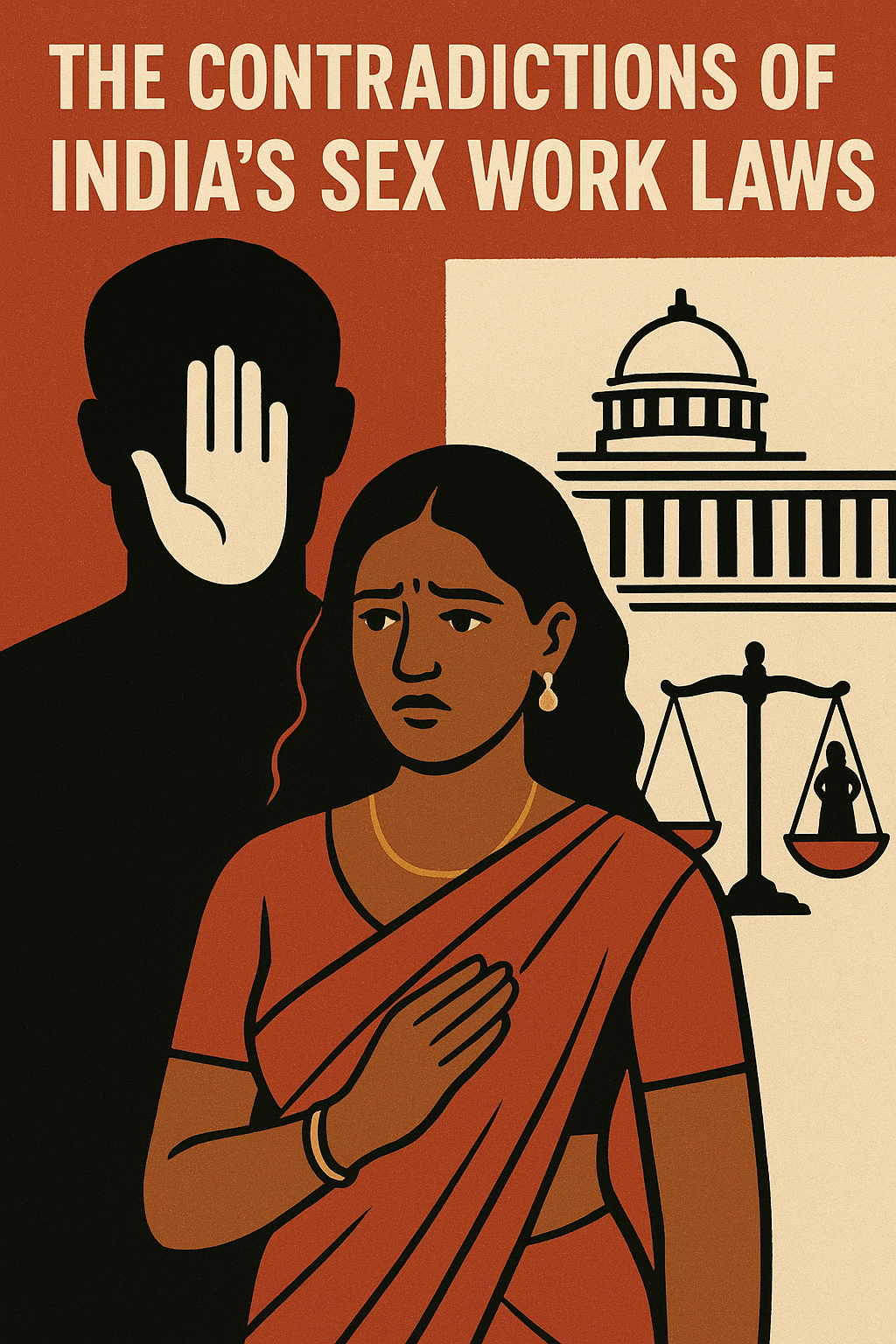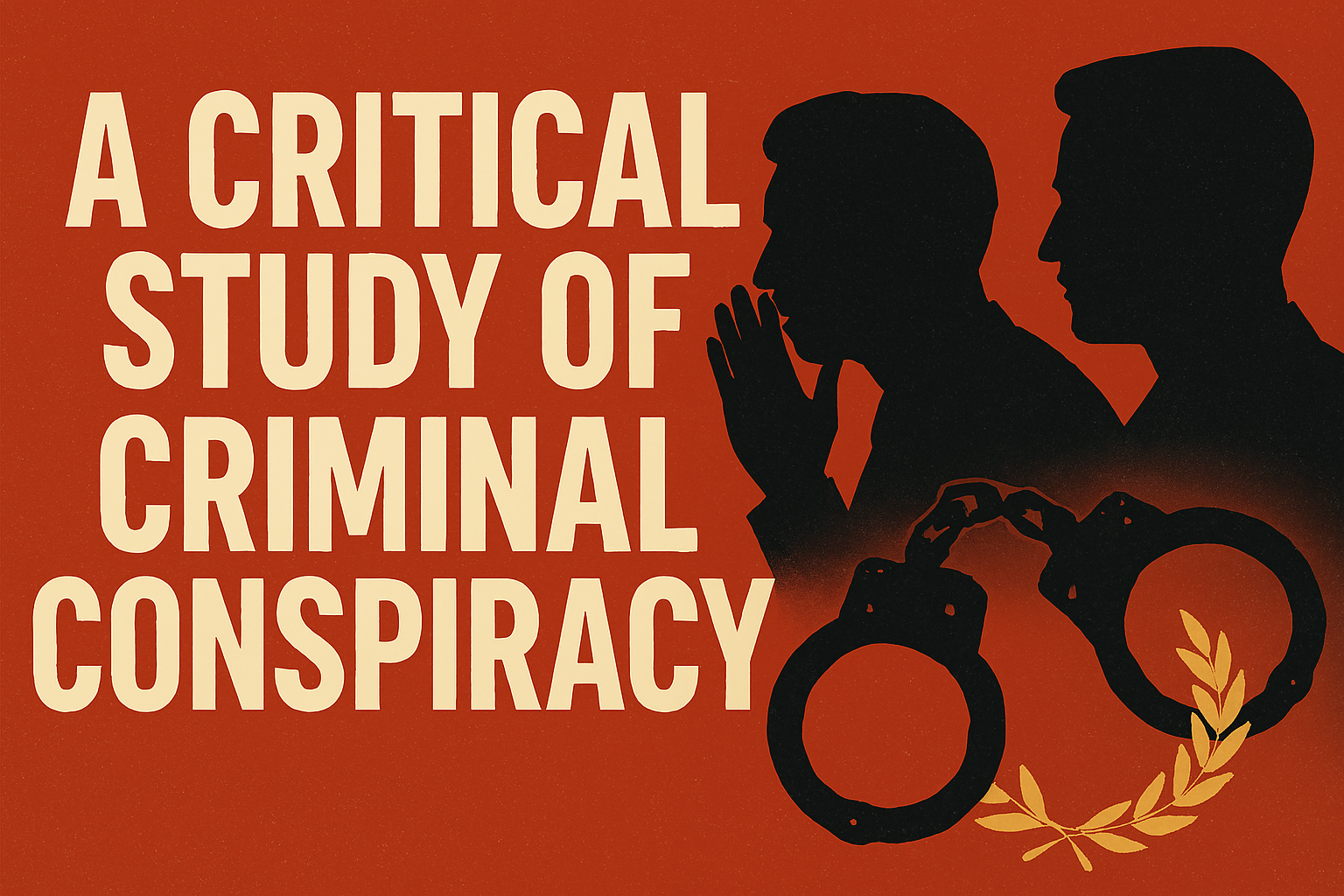



Author: Jhalak Chaudhary
Institution: School of Law, Justice and Governance, Gautam Buddha University
Introduction:
Criminal Conspiracy is a type of Inchoate Crimes and the term Inchoate is derived from the Latin term inchoatus, meaning ‘unfinished’ or ‘underdeveloped’, inchoate offences refer to actions performed in the course of committing a crime that remains incomplete. Even though these acts may lack the full realization of both mens rea (criminal intent) and actus reus (physical act), they are still punishable, reflecting the law’s preventive approach to crime control.
Inchoate Offence:
Inchoate offences, also known as incomplete crimes, refer to actions taken toward committing a crime that is not fully carried out. These include offences like attempted murder, conspiracy, abatement to murder, and attempted suicide.
The underlying principle is simple: preventing crimes rather than punishing them after they occur is better.
Inchoate offences refer to criminal act that remain unfinished or uncompleted for certain reasons. The word “inchoate” itself signifies something ‘begun’ but not completed. In criminal law, there are four key stages leading to a crime:
Legal responsibility typically arises in the last two stages. Crimes at the earlier stage-mental intent and preparation-may not always attract liability unless they fall within the ambit of Inchoate offences.
Types of Inchoate Offences:
An attempt is an act that goes beyond preparation but stops short of the actual commission of the crime. Unlike mere preparation, an attempt reflects direct movement towards fulfilling the criminal intent.
Conspiracy occurs when two or more individuals agree to engage in unlawful conduct and take steps towards carrying out that plan. Unlike other offences criminal conspiracy does not require the actual commission of the crime.
Abatement involves supporting, provoking, assisting someone in committing a criminal act. The physical element actus reus is the act of encouragement or assistance, while the mental element mens rea is the intention to help in the commission of the offence.
Criminal Conspiracy:
Criminal conspiracy under the Code is a punishable offence independent of the crimes that are committed which were the objects of criminal conspiracy. Criminal conspiracy represents a preparatory stage that occurs before the actual commission of a crime. Criminal conspiracy is a substantive offence that basically refers to an agreement between two or more persons where they agree to commit a crime at some point of time in future. Conspiracy was at earlier stages a civil wrong and later it was adjoined under criminal law in the provisions. Conspiracy under the Indian Penal Code was actually punishable only in two forms, and they are,
The Chapter VA that talks about Criminal Conspiracy was inserted in the Indian Penal Code (IPC) in 1913 as an experience at that time portrayed that dangerous conspiracies had entered into India and that the existing law failed to deal with the prevailing conditions.
It comprises only two sections 120A and 120B. And now Section 61 of The Bharatiya Nyaya Sanhita, 2023 deals with the criminal conspiracy.
Essentials of Criminal Conspiracy:
In an agreement to qualify as criminal conspiracy, at least one act must be carried out in furtherance of that agreement and to be charged and made punishable under section 120B of IPC now Section 61(2) of BNS,2023. Merely by entering into the agreement to commit the offence, the conspirators can be charged and punished.
If two or more persons enter into agreement to do something that is prohibited by law or something that furnishes ground for civil action, it is not enough to prove only for the agreement to qualify these agreements as criminal conspiracy unless some act in pursuance is also proved to be done after the agreement is made.
The proof of Conspiracy:
The first issue that forms the basis of the proof is “the existence of conspiracy” and second “involvement of conspiracy”.
For the purpose of existence of conspiracy, agreement is required, wherein as a usual requirement of agreement and also due to express words of section 120A, IPC now Section 61(1) BNS,2023, there must be two or more persons involved in the making of conspiracy.
It is imperative that the first proof must lead to the existence of the required number which can be gathered by the statement of the witnesses with the respect to the communication between the accused.
Only when such communication provides proof for the making of an agreement, to do an illegal act and between two or more persons, when it can be concluded that there is an existence of conspiracy.
If according to the assignment of the communication no existence of agreement can be concluded or no illegal act in agreement is the purpose of the agreement then no existence of conspiracy can be concluded.
It may also be said that if in a conspiracy it is at least that two persons were there in the agreement and one out of two proves his absence from that place or date and is acquitted on this ground then the other person must also be acquitted due to the fact that one person cannot conclude an agreement by himself.
It will depend upon the number of conspirators involved in the conspiracy.
In the proof of conspiracy the involvement of the conspirators and the effect of their equator and conviction on their co conspirators depend upon the proof of existence of conspiracy. If the conspiracy has proved to exist then, the equator of any conspirator may not lead to the equator of others if their involvement is proved beyond reasonable doubt and even if their numbers fall short of the required quantity.
Effect of Acquittal of Accused:
It was held in Topandas v. The State of Bombay (1955), that if, there are, four individuals were charged with having committed the offence under Section 120B of the IPC, and if three out of these four were acquitted of the charge, the remaining accused, could never be held guilty of the offence of criminal conspiracy.
Where several prisoners are included in the same indictment, the jury may find one guilty and acquit the others, and vice versa. But if multiple individuals are charged with participating in a riot and the jury finds all but not guilty, those two must also be acted unless the indictment specifically alleges and evidence proves that they committed the riot along with another individual who has not been tried under the same indictment. Similarly, in a case of conspiracy, if only one person is found guilty while the others are acquitted, that individual must also be acquitted unless it is both stated in the indictment and supported by evidence that they conspired with someone who was not part of the current trial.
It has been established that if all but one of the accused named in the indictment are acquitted, and the conspiracy is not earliest to involve unidentified individuals, the remaining dependent cannot be validly convicted, and no legal judgement can be issued against them.
In Gulab Singh v. The Emperor (1916), Justice Knox stated that in order to establish a charge of conspiracy, it must be proven that at least two individuals entered into an agreement requiring the involvement of at least two individuals, as a conspiracy cannot be formed by just one person.
In King-Emperor v. Osman Sardar (1924), The Chief Justice Sanderson noted that the essence of an offence under section 120B lies in the supposed agreement between the two accused individuals and when the jury determined that one of the individuals was not involved in the agreement and acquitted them, the remaining accused could not be convicted on that charge. Since the charge was based on an agreement, the consent of both parties was essential to establish its existence.
Punishment of Criminal Conspiracy:
The punishment for criminal Conspiracy is provided under Section 120B of IPC now Section 61(2) of BNS, 2023,:
Where the criminal conspiracy is to commit a serious offence: In cases where the conspiracy is to commit an offence:
Every person who is a party to such a criminal conspiracy shall be punished in the same manner as if he had abetted such offence.
Criminal conspiracy involving offences not falling under the first category is punishable by law. Anyone who takes part in such a conspiracy may face imprisonment for a term up to 6 months, a fine, or both.
Conclusion:
From the above discussion we have understood that conspiracy is a combination of two or more persons for unlawful purposes. It refers to a shared agreement between two or more people to engage in illegal activity. Criminal conspiracy is not the same as abatement as in abatement one person influences another to commit an illegal act whereas in conspiracy two or more persons enter into an agreement to commit that offence.
Reference:
Case Laws:
Topandas v. The State of Bombay (1955)
Gulab Singh v. The Emperor (1916)
King-Emperor v. Osman Sardar (1924)